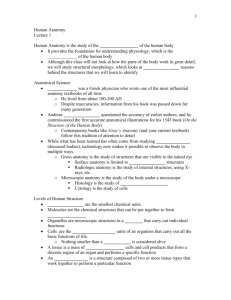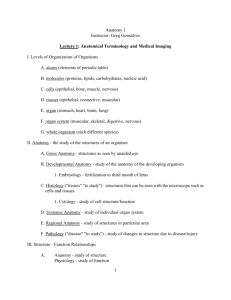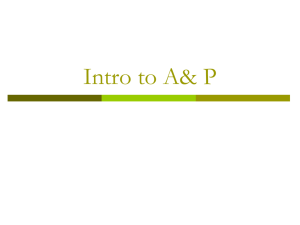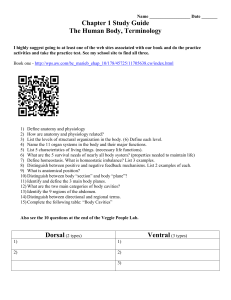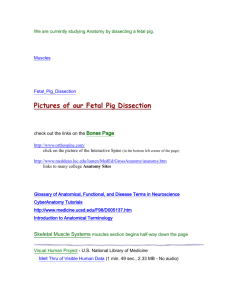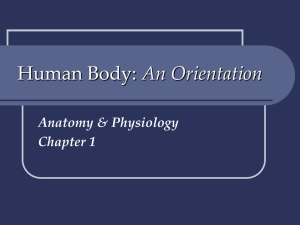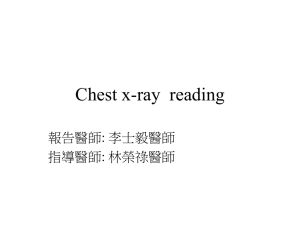Module 1 Exam Review no answers
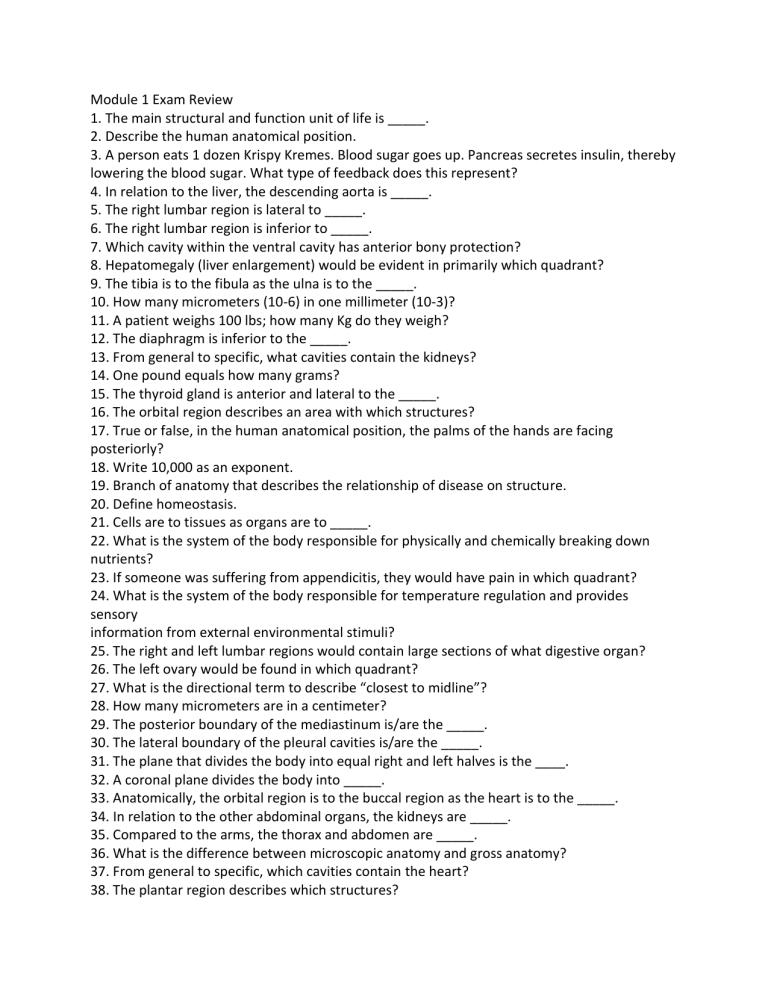
Module 1 Exam Review
1. The main structural and function unit of life is _____.
2. Describe the human anatomical position.
3. A person eats 1 dozen Krispy Kremes. Blood sugar goes up. Pancreas secretes insulin, thereby lowering the blood sugar. What type of feedback does this represent?
4. In relation to the liver, the descending aorta is _____.
5. The right lumbar region is lateral to _____.
6. The right lumbar region is inferior to _____.
7. Which cavity within the ventral cavity has anterior bony protection?
8. Hepatomegaly (liver enlargement) would be evident in primarily which quadrant?
9. The tibia is to the fibula as the ulna is to the _____.
10. How many micrometers (10-6) in one millimeter (10-3)?
11. A patient weighs 100 lbs; how many Kg do they weigh?
12. The diaphragm is inferior to the _____.
13. From general to specific, what cavities contain the kidneys?
14. One pound equals how many grams?
15. The thyroid gland is anterior and lateral to the _____.
16. The orbital region describes an area with which structures?
17. True or false, in the human anatomical position, the palms of the hands are facing posteriorly?
18. Write 10,000 as an exponent.
19. Branch of anatomy that describes the relationship of disease on structure.
20. Define homeostasis.
21. Cells are to tissues as organs are to _____.
22. What is the system of the body responsible for physically and chemically breaking down nutrients?
23. If someone was suffering from appendicitis, they would have pain in which quadrant?
24. What is the system of the body responsible for temperature regulation and provides sensory information from external environmental stimuli?
25. The right and left lumbar regions would contain large sections of what digestive organ?
26. The left ovary would be found in which quadrant?
27. What is the directional term to describe “closest to midline”?
28. How many micrometers are in a centimeter?
29. The posterior boundary of the mediastinum is/are the _____.
30. The lateral boundary of the pleural cavities is/are the _____.
31. The plane that divides the body into equal right and left halves is the ____.
32. A coronal plane divides the body into _____.
33. Anatomically, the orbital region is to the buccal region as the heart is to the _____.
34. In relation to the other abdominal organs, the kidneys are _____.
35. Compared to the arms, the thorax and abdomen are _____.
36. What is the difference between microscopic anatomy and gross anatomy?
37. From general to specific, which cavities contain the heart?
38. The plantar region describes which structures?
39. Which system of the body provides protection, movement and generation of heat?
40. Which system of the body contains the pituitary, pancreas and adrenals glands to control metabolic activity and multiple organ systems?
41. Which system of the body regulates body temperature and delivery of blood to tissues?
42. True or false, the esophagus is located in the mediastinum?
43. Which subdivision of anatomy studies organism development from conception to 8 weeks gestation?
44. Which subdivision of anatomy uses x-rays and magnetic fields to provide anatomical images?
45. The patella is _____.
46. The intestines are _____ to the liver and stomach.
47. Which system of the body drains fluid from tissues and provides structures and cells for a quality immune response?
48. Digital is to antebrachial as patellar is to _____.
49. Metacarpal is to carpal as tarsal is to _____.
50. Structures on opposite sides of the midsagittal plane are _____.
51. What is the word describing the superficial layer of a serous membrane that lines a body cavity?
52. What directional term would you use to describe the location of the greater omentum?
53. Which quadrant is the spleen located in?
54. What type of feedback mechanism reinforces a given stimulus?
55. How many milliliters in 2 quarts of milk?
56. 1.5 meters is how many feet?
57. What is the major organ in the mediastinum?
58. Histology is to tissues as cytology is to _____.
59. What is the relationship between anatomy and physiology?
60. 32 oz is how many milliliters?
61. Swelling, redness, rashes, fever, etc are examples of:
62. Nausea, pain, headache, malaise, etc are examples of:
63. Define a syndrome.
64. A condition that alters homeostasis and causes elevated blood pressure is referred to as
_____________
65. Define the following types of disease processes or methods of communicability:
Infectious, autoimmune, nosocomial, airborne, common vehicle, direct contact, droplet, indirect contact, vector-borne, fomite, endemic, pandemic.

